The Walls Speak
Street art from five continents
-
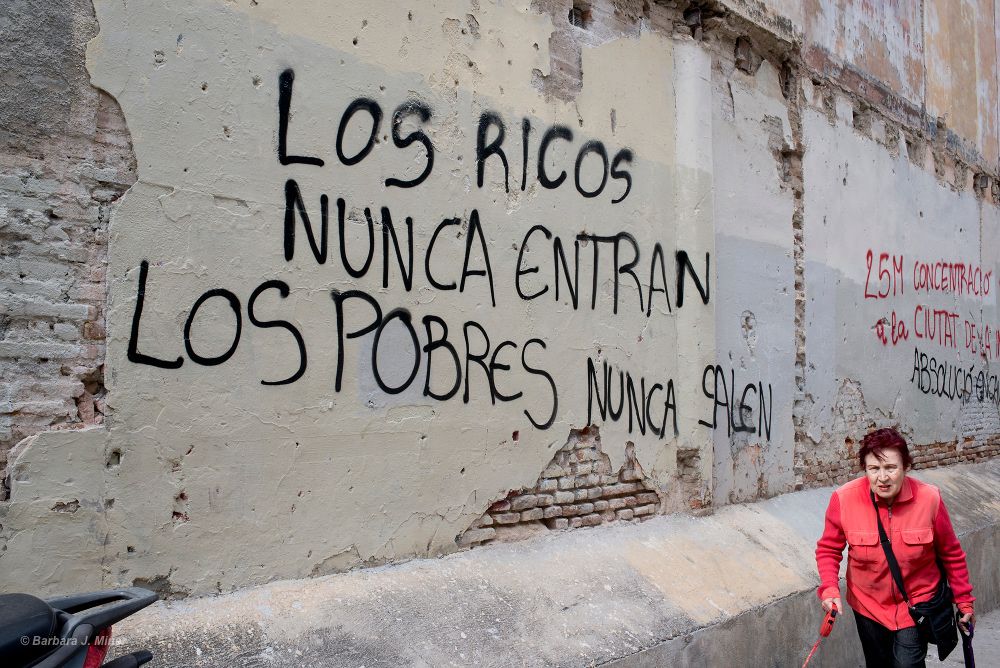
The Sants neighborhood, Barcelona, Spain, 2016. Translation: The rich never enter, the poor never leave.
-
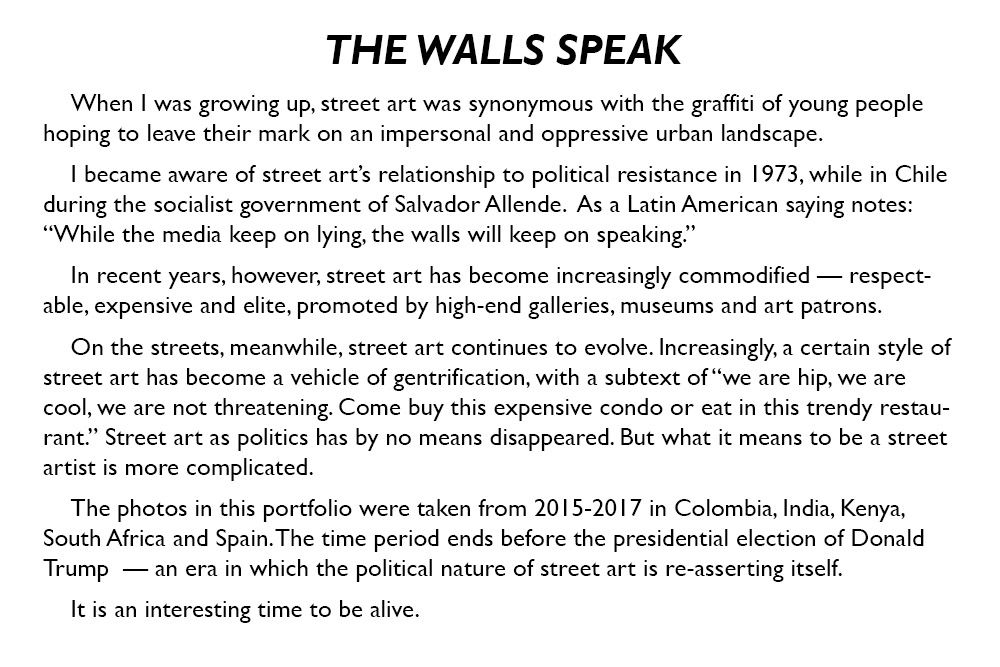
-
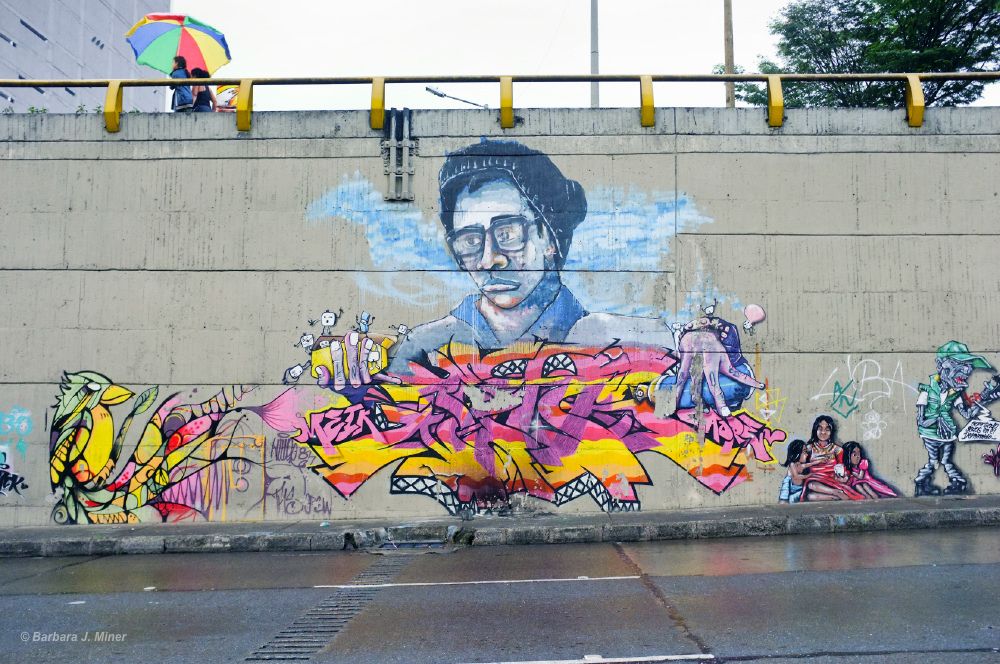
Downtown Medellín, San Juan Avenue, 2015. Street art honoring Jaime Garzón, a political activist, journalist and satirist who was gunned down in Bogotá in 1999, reportedly by right-wing paramilitary forces.
-
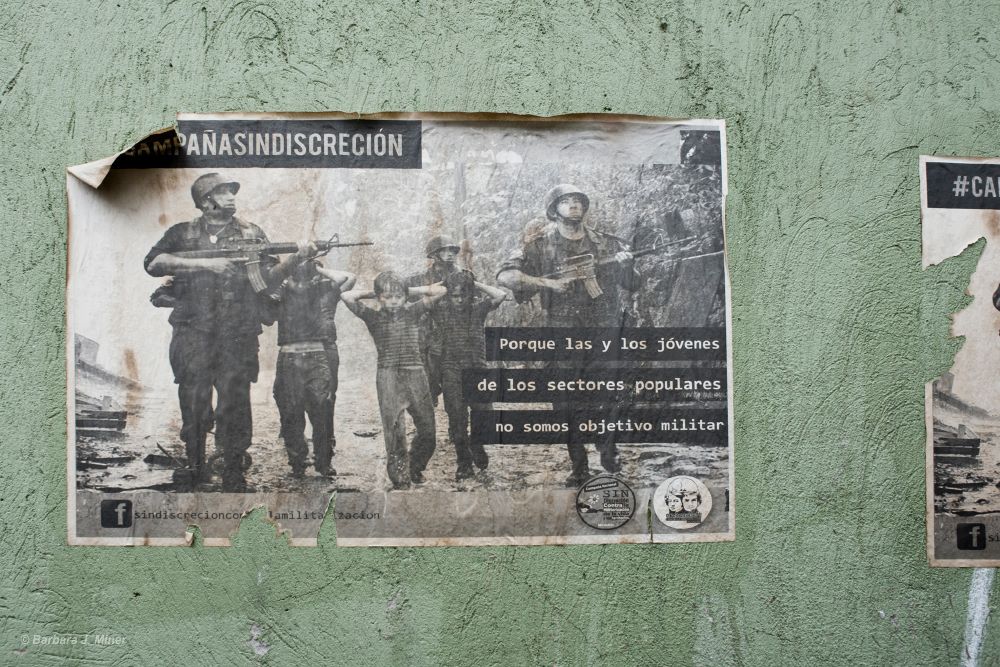
The Santo Domingo neighborhood, Medellín 2015. Translatin: The children in poor neighborhoods are not a military objective.
-
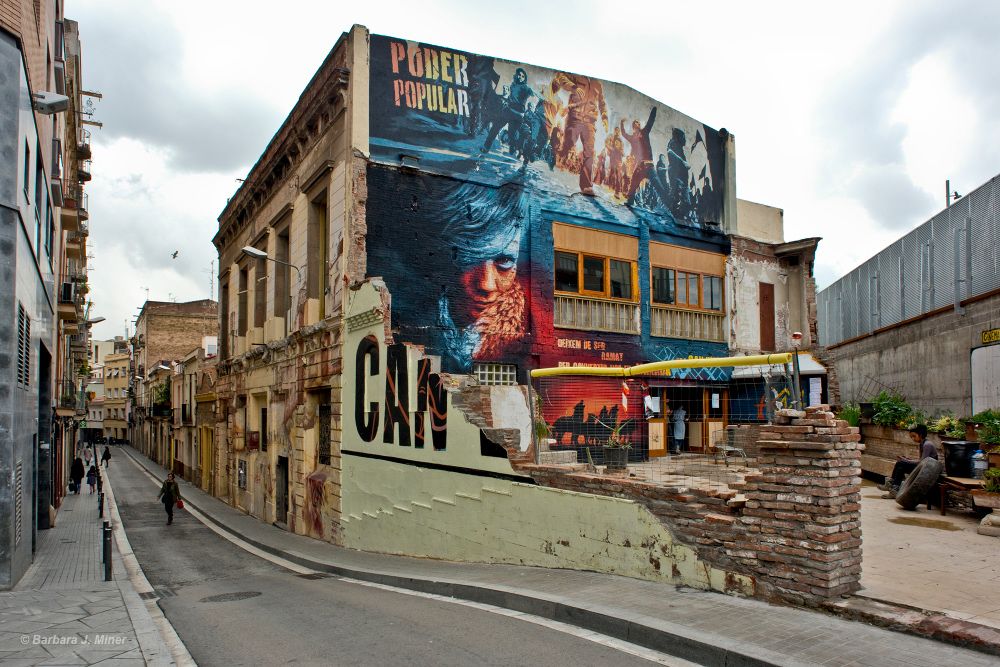
The Sants neighborhood, Barcelona, Spain, 2016. The Can Vies community center, which was taken over by local activists in 1997 and has become an international symbol of community resistance to gentrification and unfetterred tourism.
-
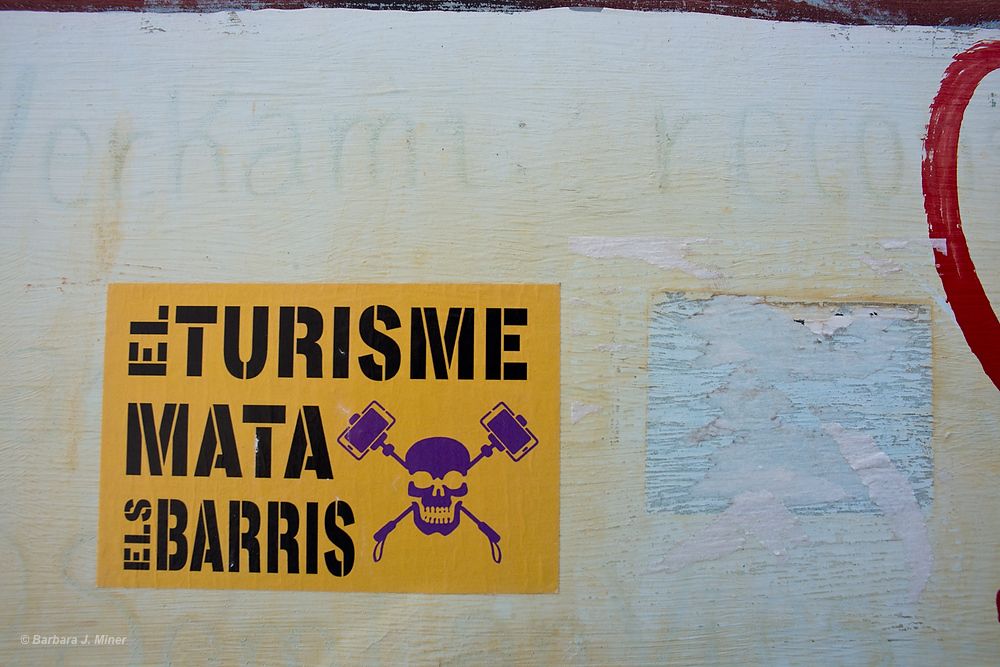
Sticker art on a consruction site near the Can Vies community center. in Barcelona, Spain, 2016. Translation: tourism kills neighborhoods.
-
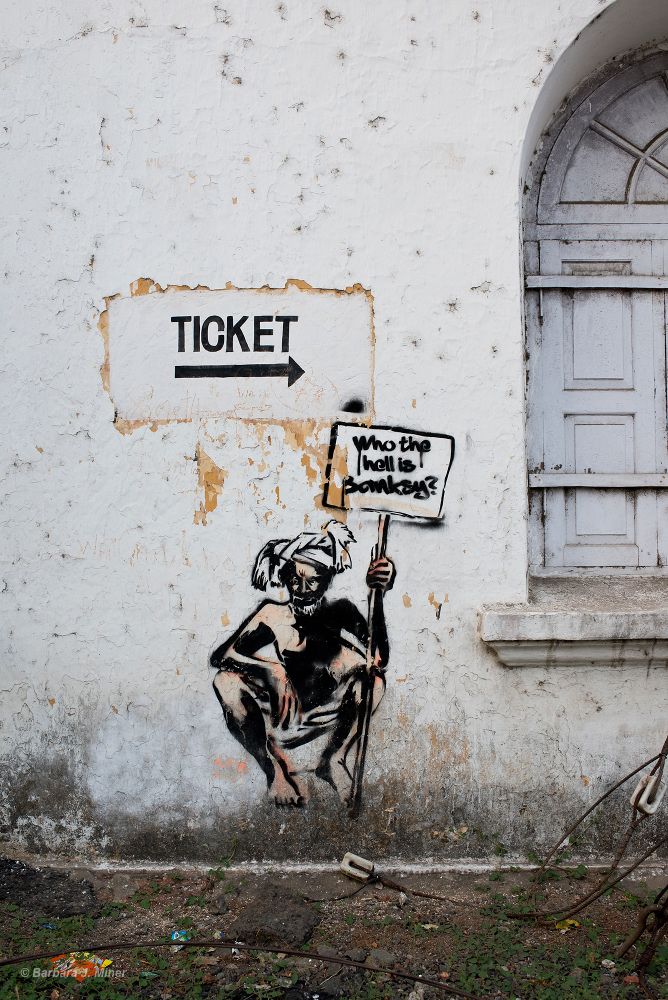
Fort Kochi, India, 2016, by the street artist "Guess Who," who emerged as a counterpoint to a prestigious international art competition in 2014 in nearby Kochi.
-
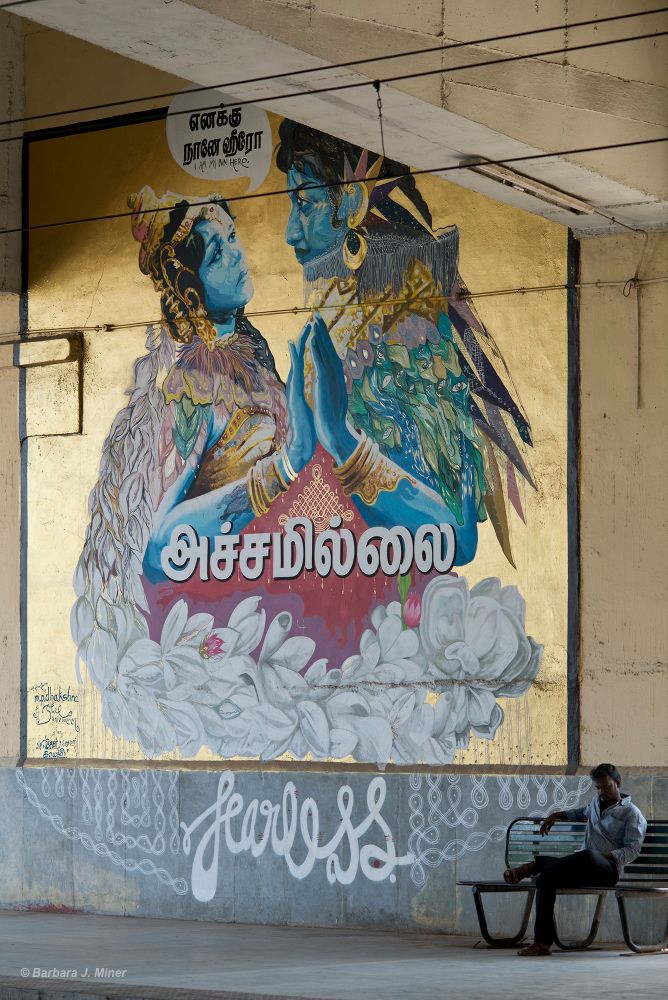
Greenways Train Station, Chennai, India, 2016. By the street art collective "Fearless," which uses art to speak out against gender violence. Translation of the Tamil script: Fearless.
-
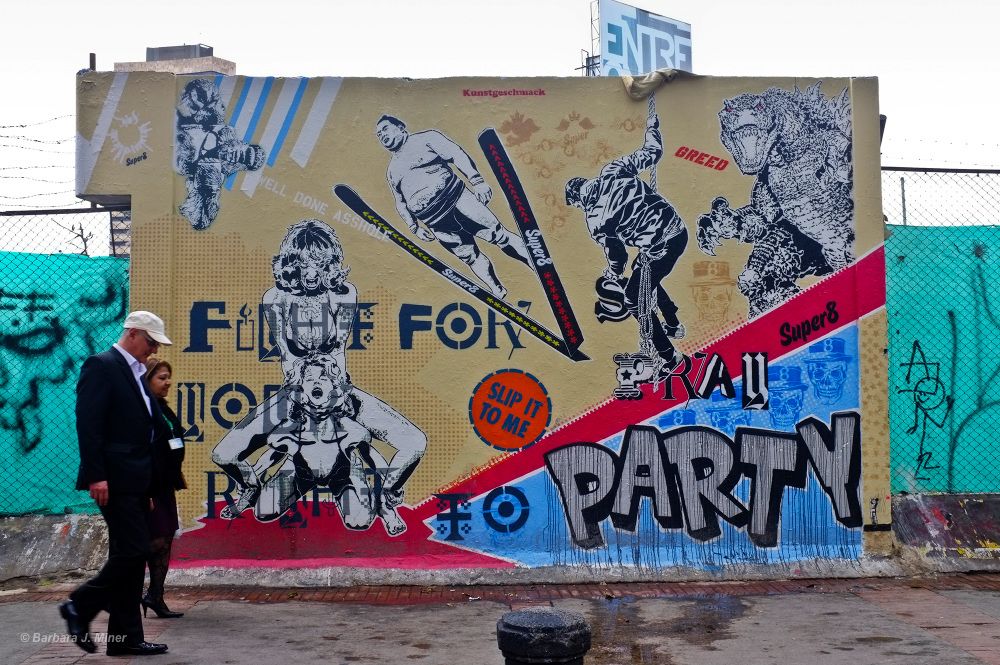
Downtown Bogotá, Colombia, 2017. By the German street artist Super8, whose slogan is "start making work that matters."
-
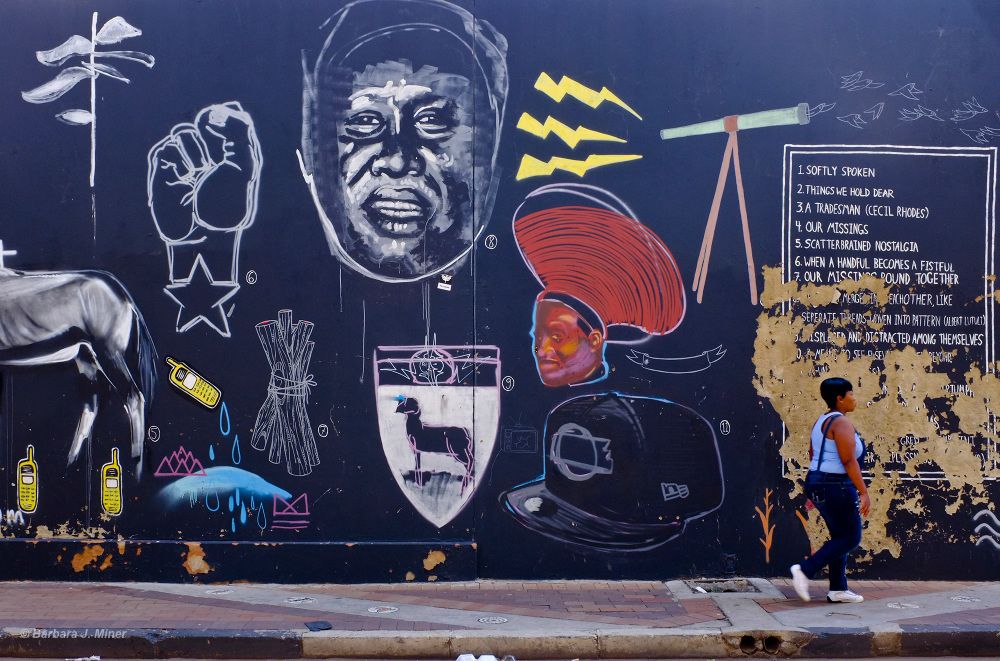
Johannesburg, South Africa, 2016. Detail from a block-long mural along Berea Road. The mural is a collaboration between Know Hope (Tel Aviv), Gaia (New York), Franco JAZ Fasoli (Buenos Aires) and Freddy Sam (South Africa), known collectively as Acylic Walls.
-
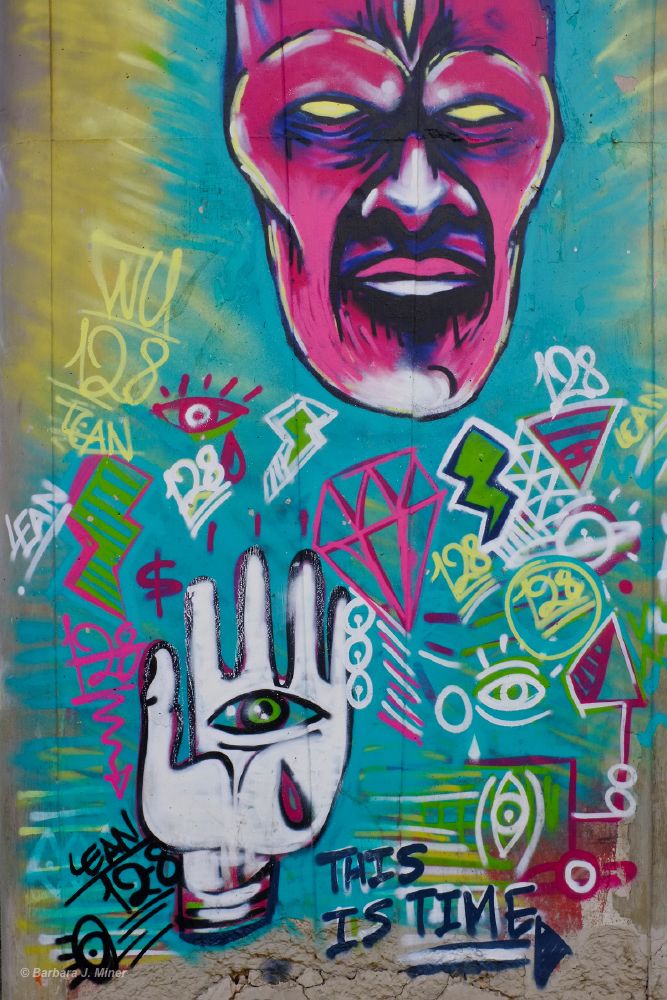
Along Berea Road, Johannesburg, South Africa, 2016.
-
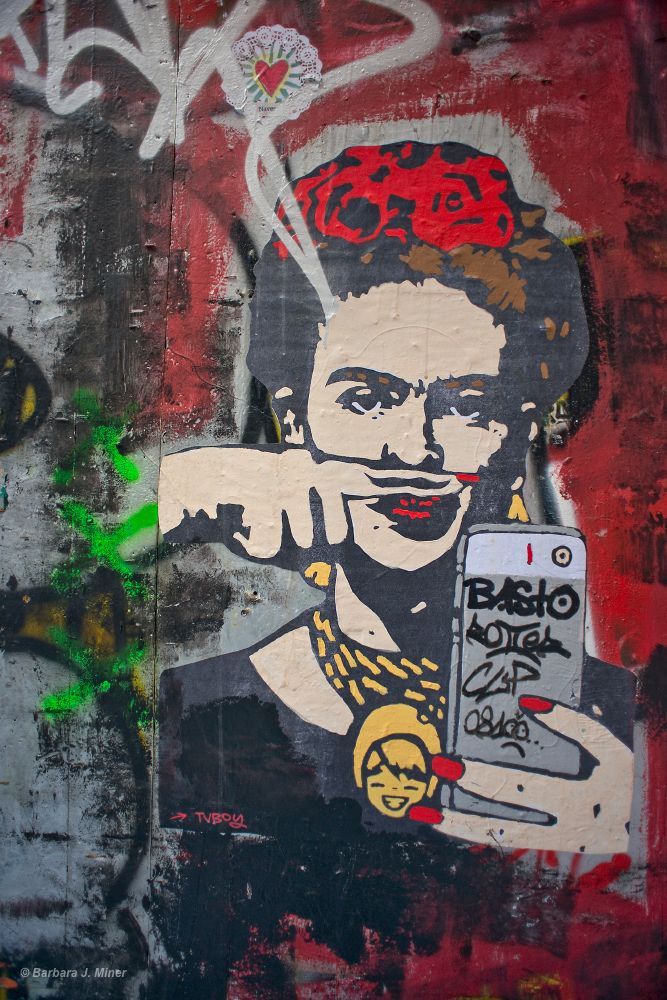
Street art in the La Rambla neighborhood, Barcelona, 2016.
-
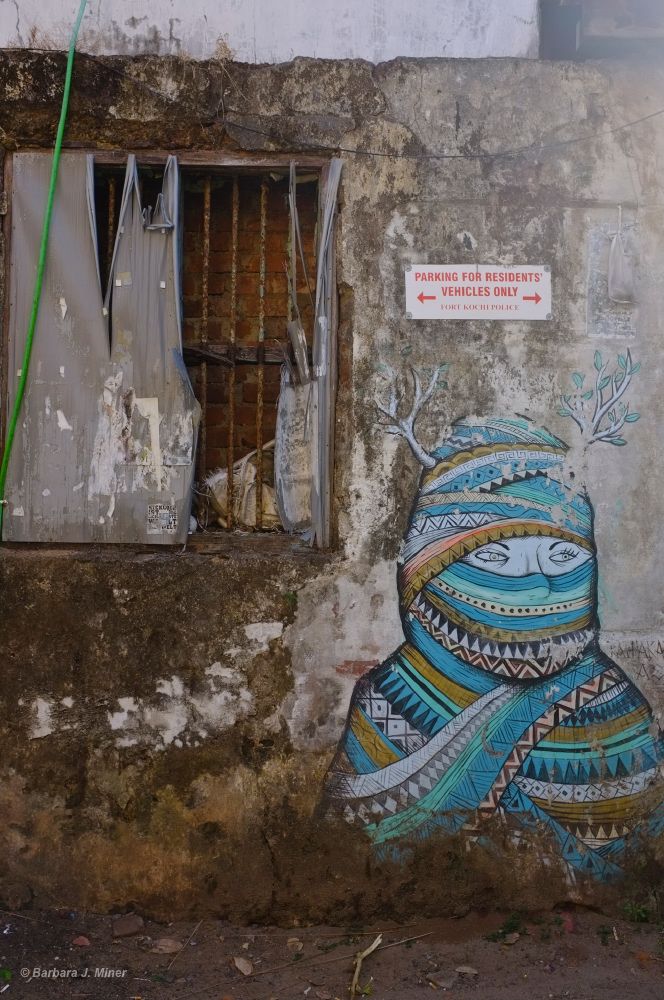
Fort Kochi, India, 2016,
-
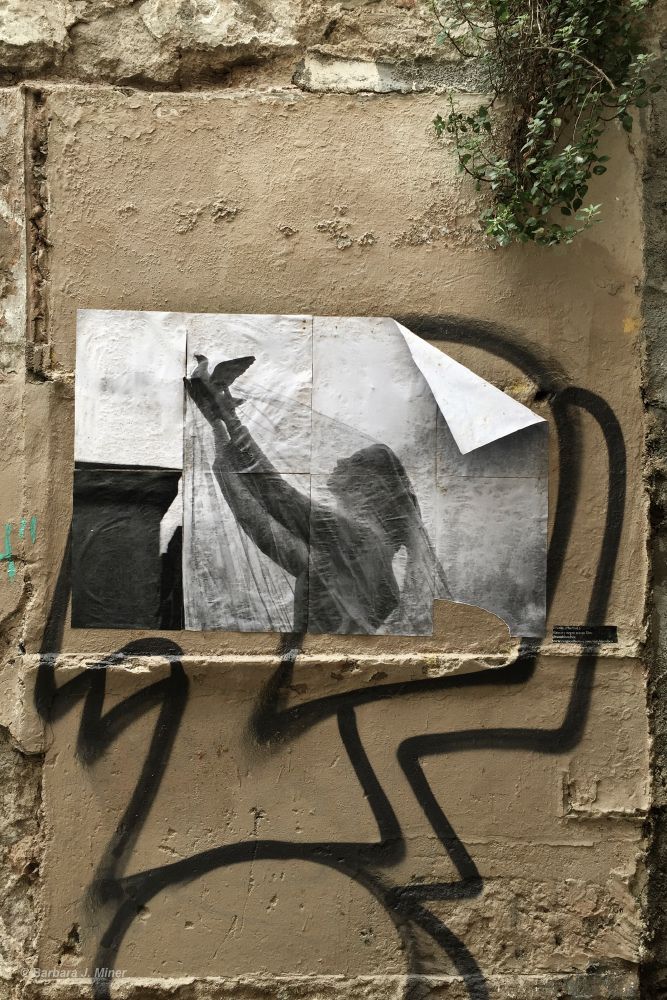
Part of a series of "guerrilla wheat-paste" installations by a collective of artists in the Born/Gothic neighborhood of Barcelona. This work —El Velo (The Veil) —is from a 35mm black-and-white photo printed on letter-sized paper and wheat-pasted to the wal.
-
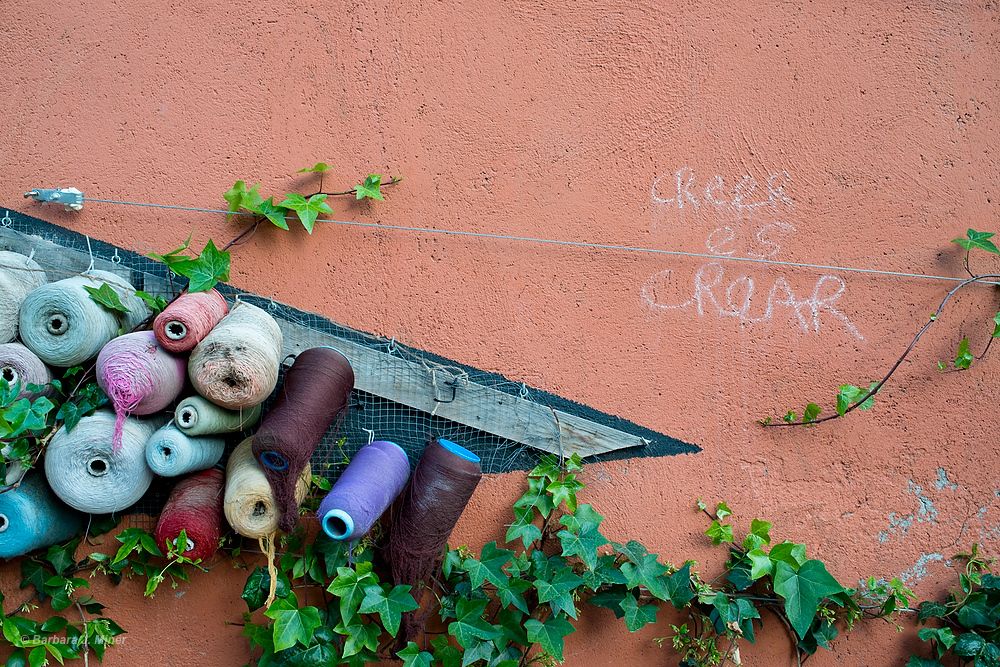
The Can Battló complex in Barcelona. Translation of chalk-printing: Believing is Creating.
-
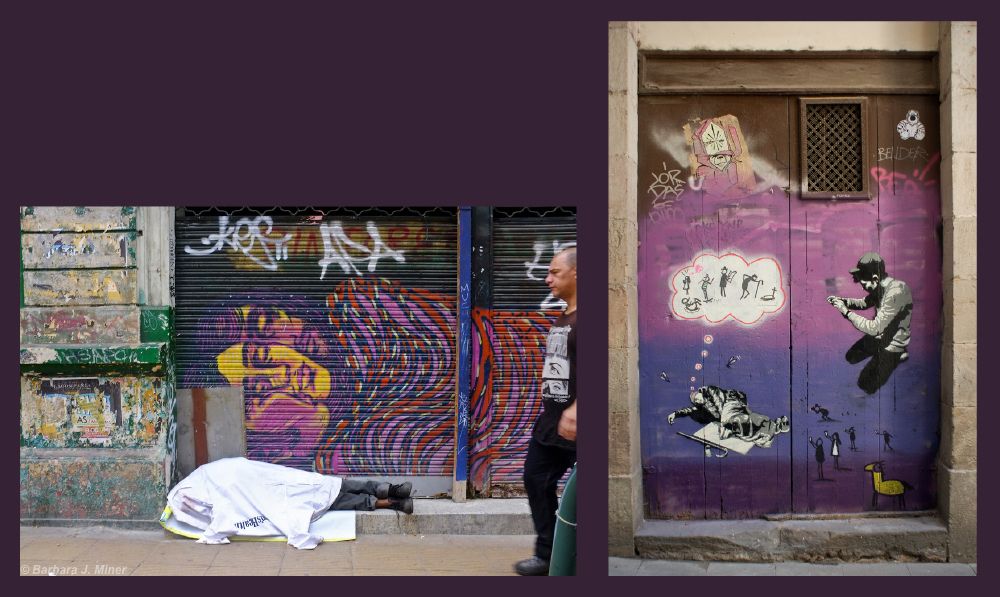
Life IImitating Art in downtown Bogotá (left). Art imitating Life in Barcelona (right.)
-
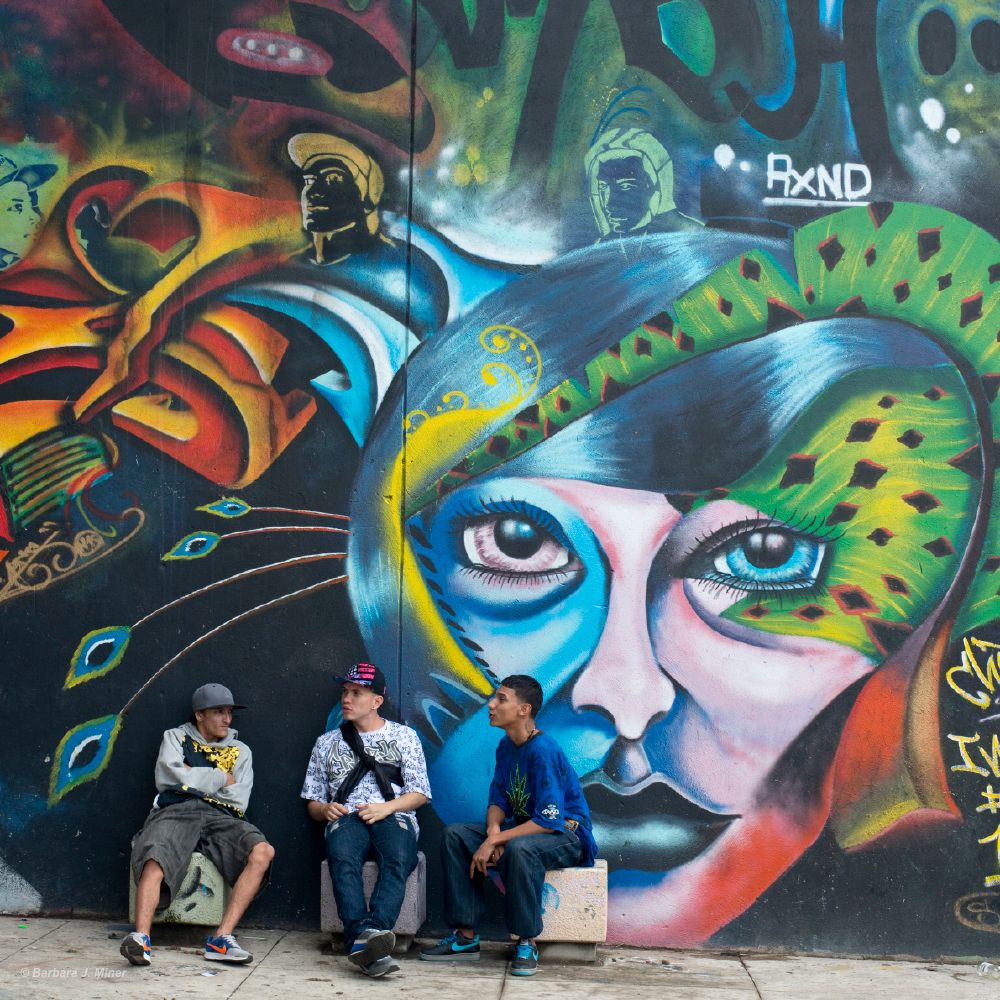
Publicly sponsored artwork as part of the escalator transit system in the hills of the Comuna 13 neighborhood in Medellín, Colombia. 2015.
-
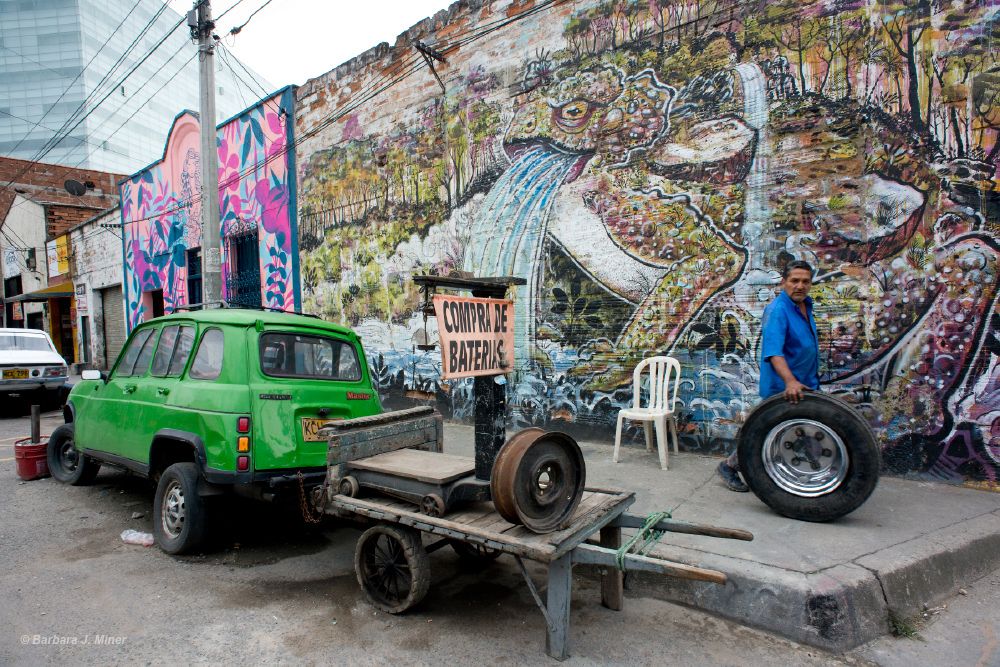
A mural in the Ciudad del Rio neighborhood in Medellín, Colombia, 2017. The historically industrial/warehouse area is increasingly home to artistsand upscale residents.
-
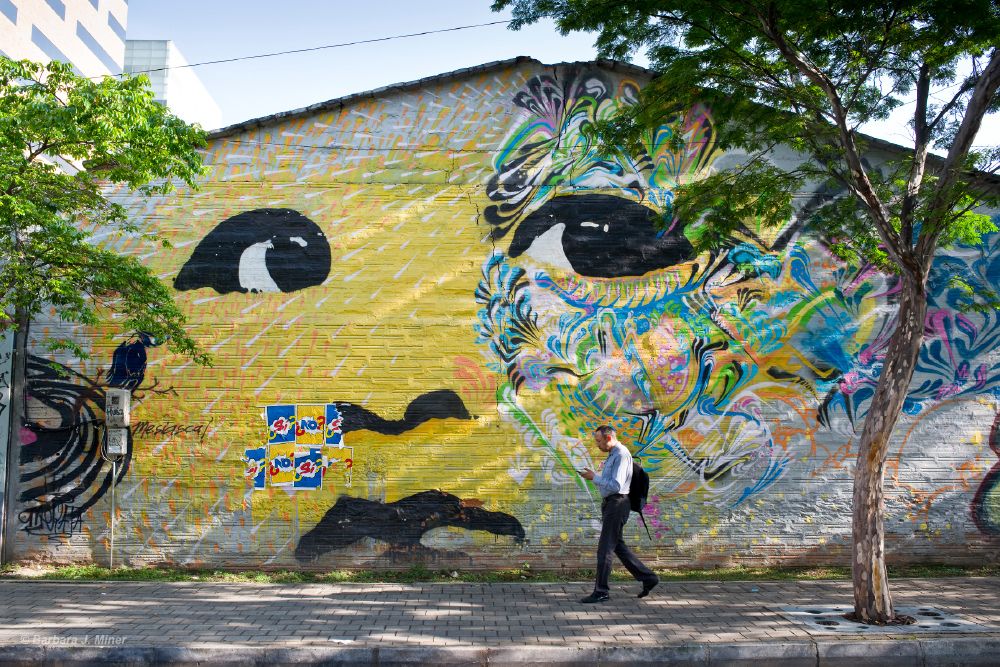
A mural by the Colombia street artist "Stinkfish," opposite the Museum of Moden Art in Medellín, Colombia, 2016. The tattered poster in the lower left is from "sí o no" reminders to vote in the referendum on peace accords with leftist guerrillas.
-
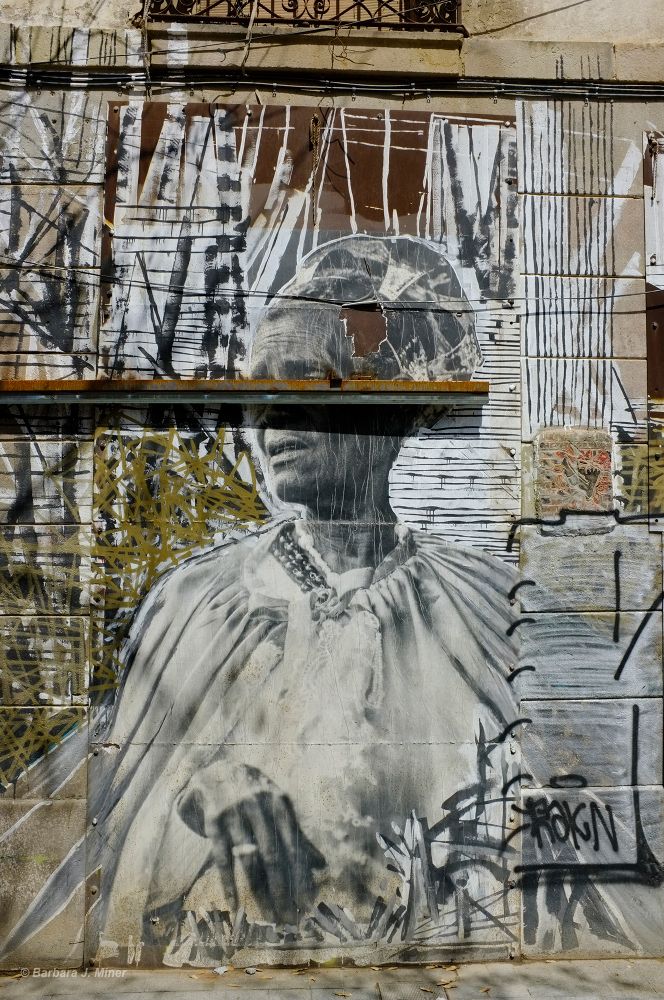
A mural whose building is being remodeled, in the Born neighborhood of Barcelona, Spain, 2016.
-
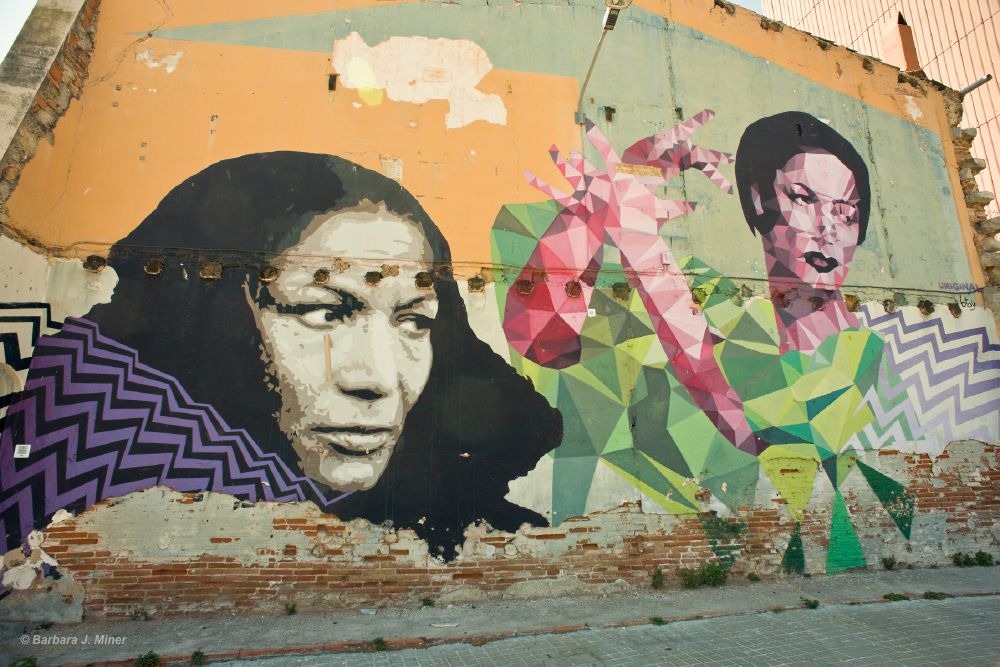
Barcelona, Spain.
-
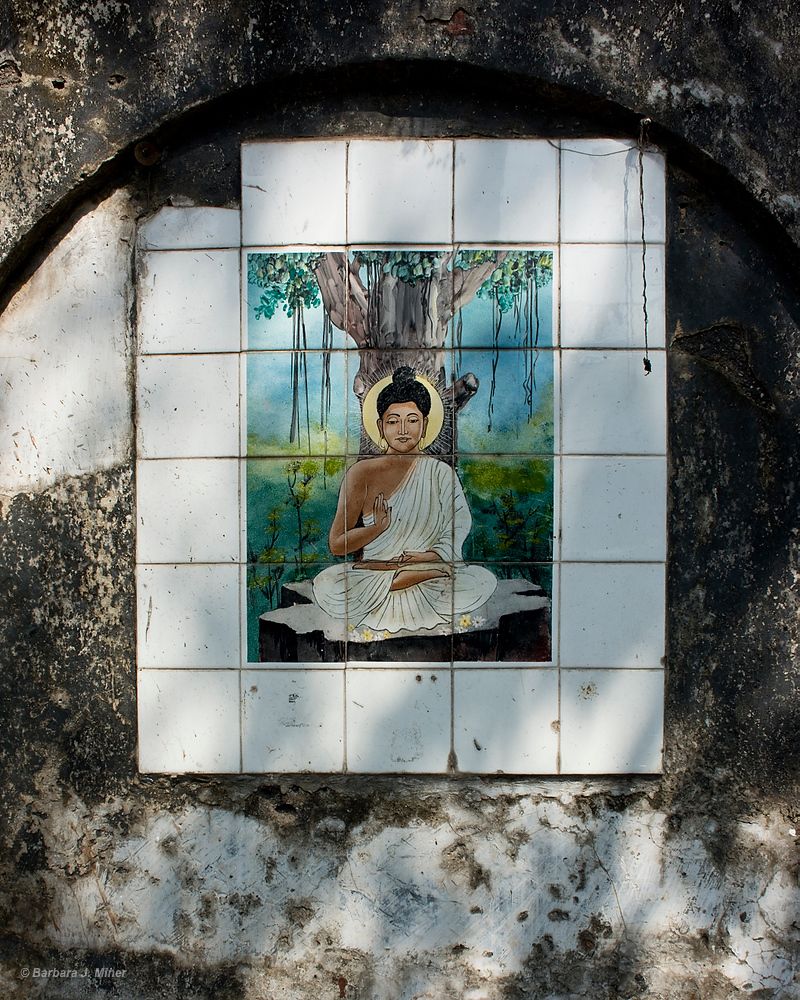
In choosing the photos for this portfolio, I interpreted “street art” widely. This was especially true in India, where it is impossible to impose Western preconceptions (or if one does, one might as well have stayed home.) Here: Mumbai, India, 2016, on the outskirts of the Dharavi informal settlement.
-
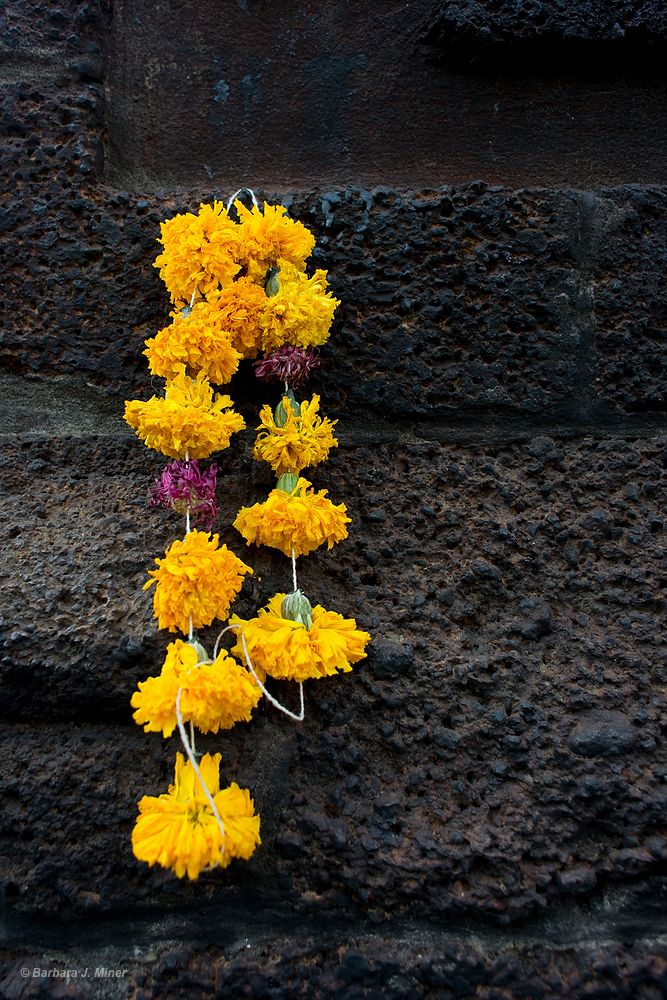
Flowers outside the Church of St. Francis of Assissi in Goa, India, 2016.
-
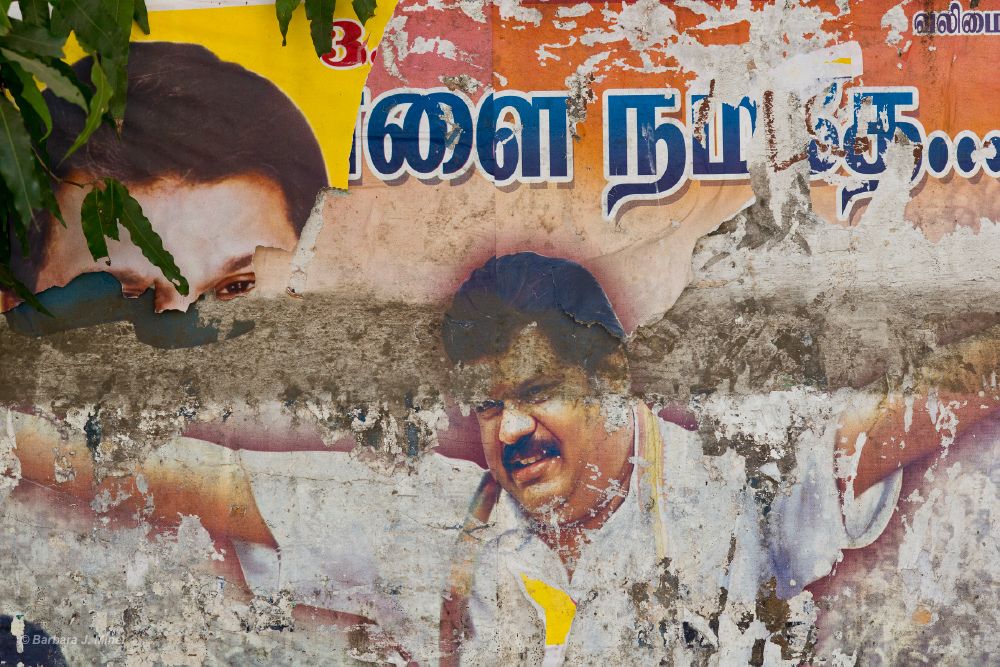
Political campaign posters, over the years, Chennai, India, 2016.
-
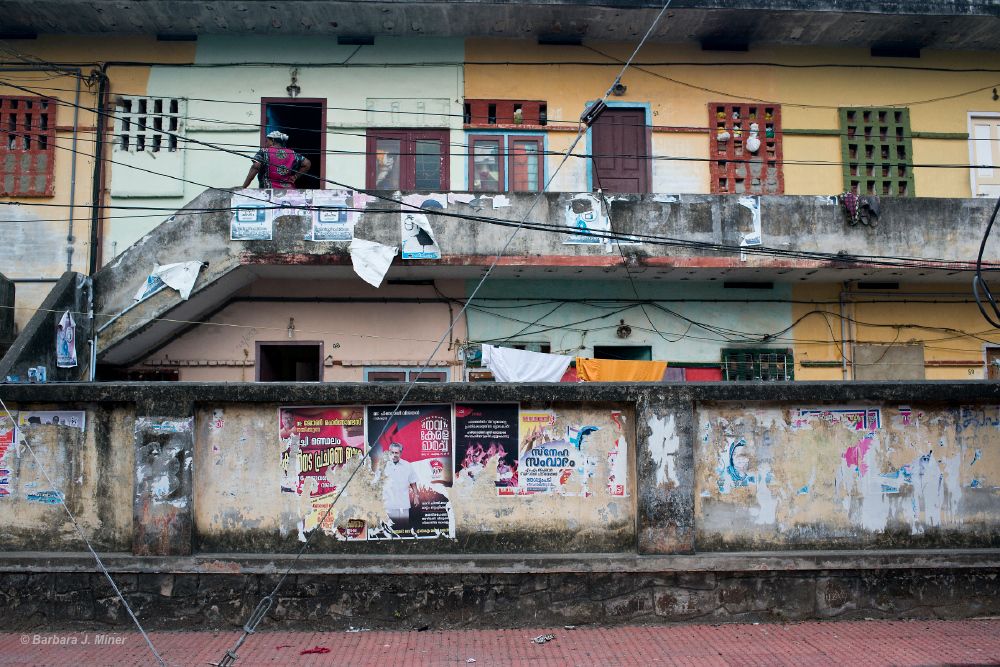
Fort Kochi, India, 2016.
-
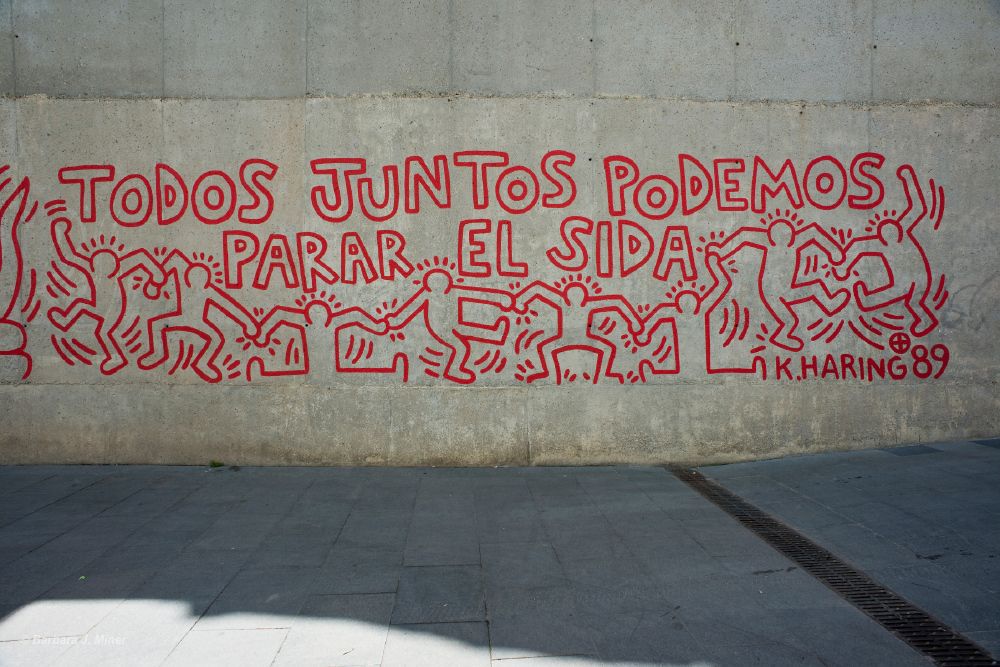
REMEMBERING. Street art as resistance also includes work that pays homage to essential historical moments. Here, Barcelona, Spain, 2016. A detail from the re-creation of a 1989 Keith Haring mural, which brought into the open the then-taboo subject of AIDS. Translation: Everyone, together, can stop AIDS. The mural was originally in the Raval neighborhood and in the mid-1990swas transferred to a wall outside the Museum of Contemporary Art.
-
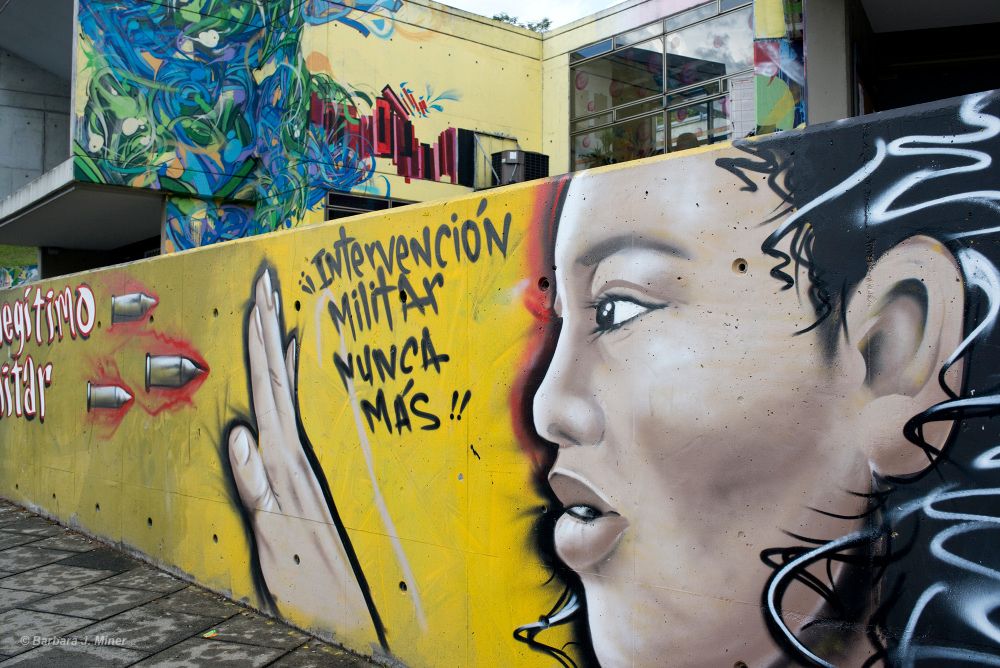
REMEMBERING: From Comuna 13 in Medellín, Colombia, 2015. In 2002 the neighborhood was invaded by military and paramilitary forces in an attempt to oust leftist guerrillas. Scores of residents were killed, severral hundred injured, and countless "disappeared." Translation: Military intervention, never again."
-
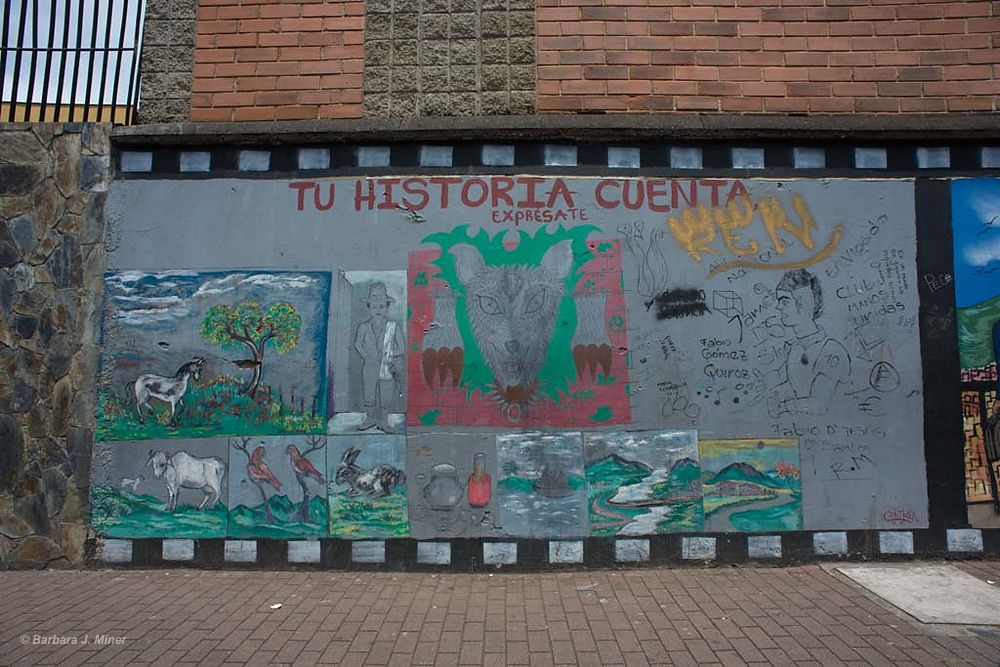
REMEMBERING; From a block-long series of murals, telling the turbulent history of the Santo Domingo neighborhood in Medellín, Colombia as resident built their neighborhood and defended it from governmental and paramilitary onslaughts. Translation: Youe history matters. Tell it."
-
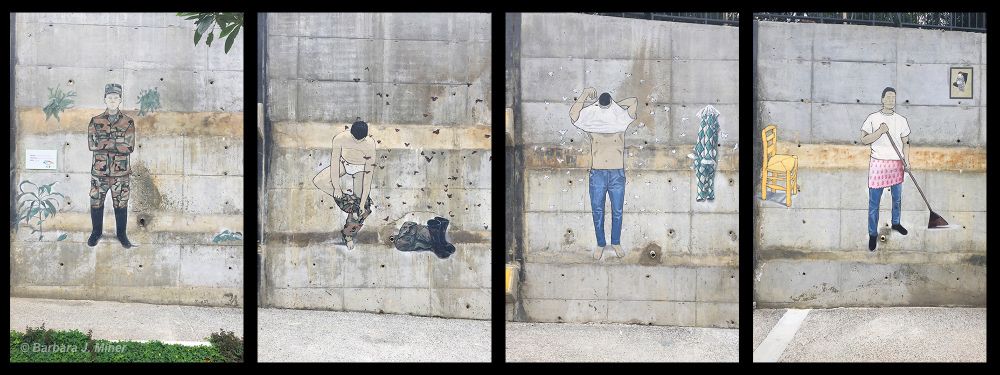
REMEMBERING; Panels along the light rail system in Medellín, Colombia, 2016, depicting the transformation of rebels laying down their guns and joining the civilian population.
-
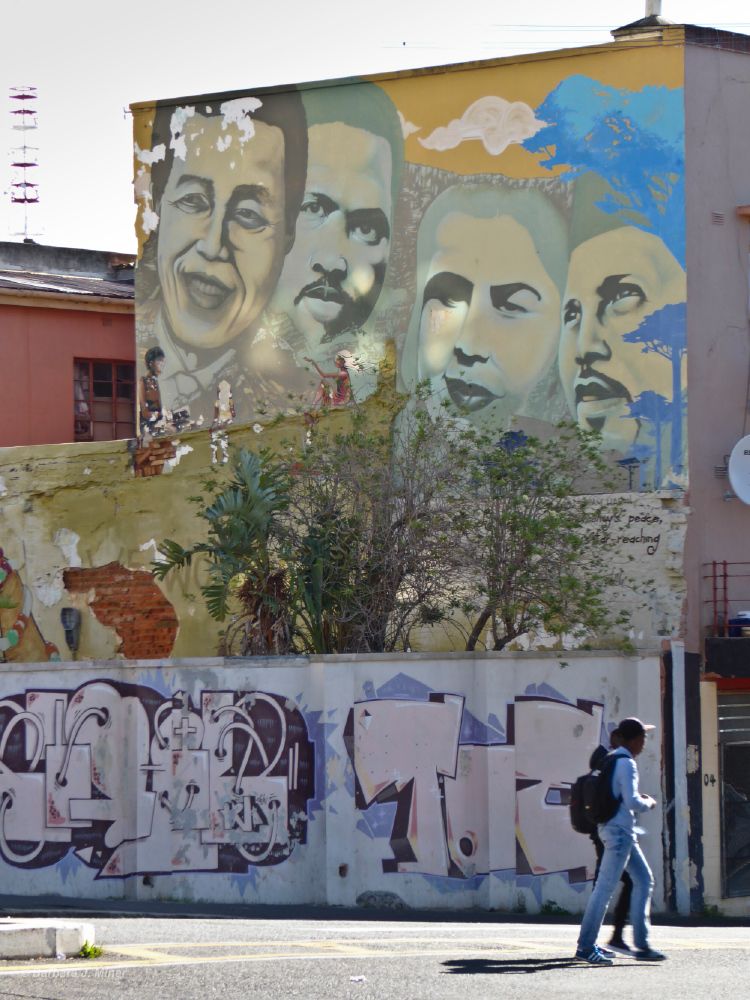
REMEMBERING: District 6 in Capetown, South Africa, remembering heroes of the struggle against apartheid, 2016
-
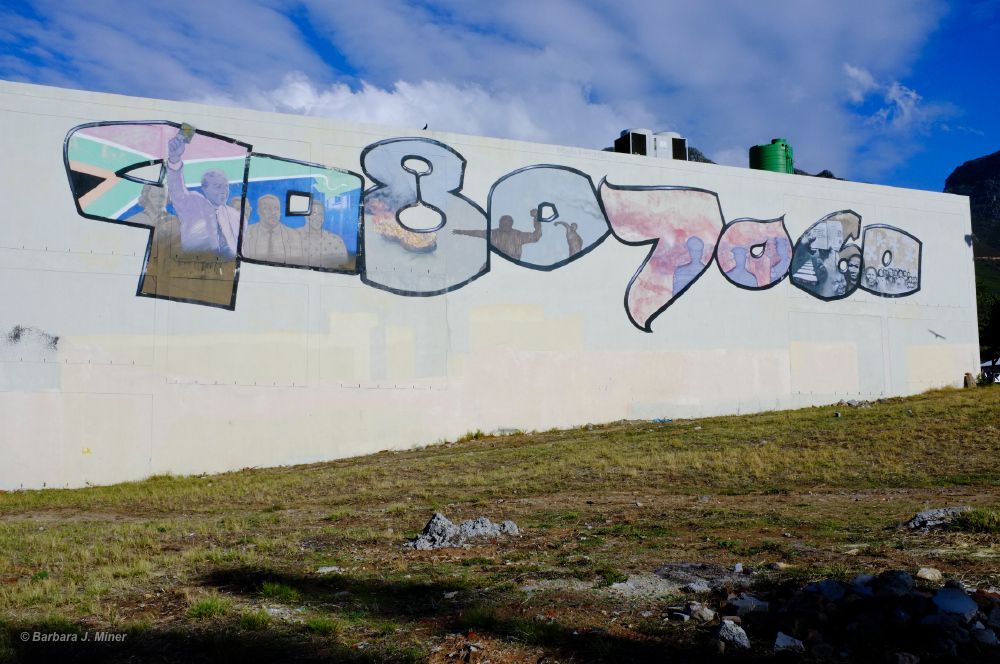
REMEMBEERING: A mural in Capetown, South Africa, 2016, depicting decades of strguggle against apartheid — from the Sharpeville massacre in1960, to 1990, when Nelson Mandela was released from prison.
-

GENTRIFICATION/COMMODIFICATION: Coca-Cola, perhaps the first global company to develop branding into an artform. Here: Myesore, India, near the Chamundeshwari Templ in the Charmundi Hills, 2016.
-
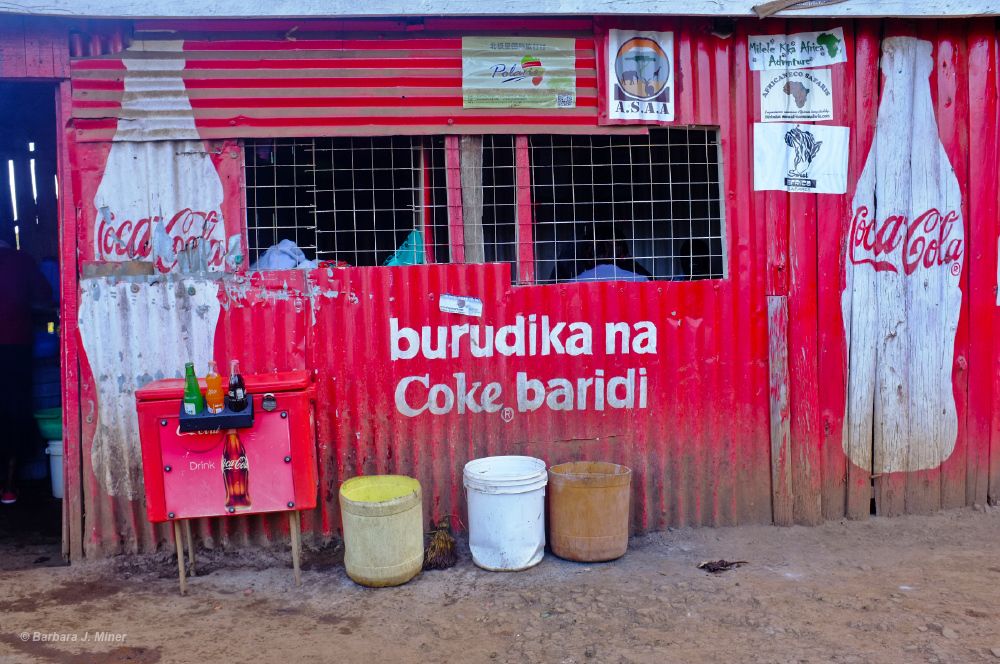
GENTRIFICATION/COMMODIFICATION: The backside of a rest-stop in Kenya, about an hour's drive out of Nairobi, 2016.
-
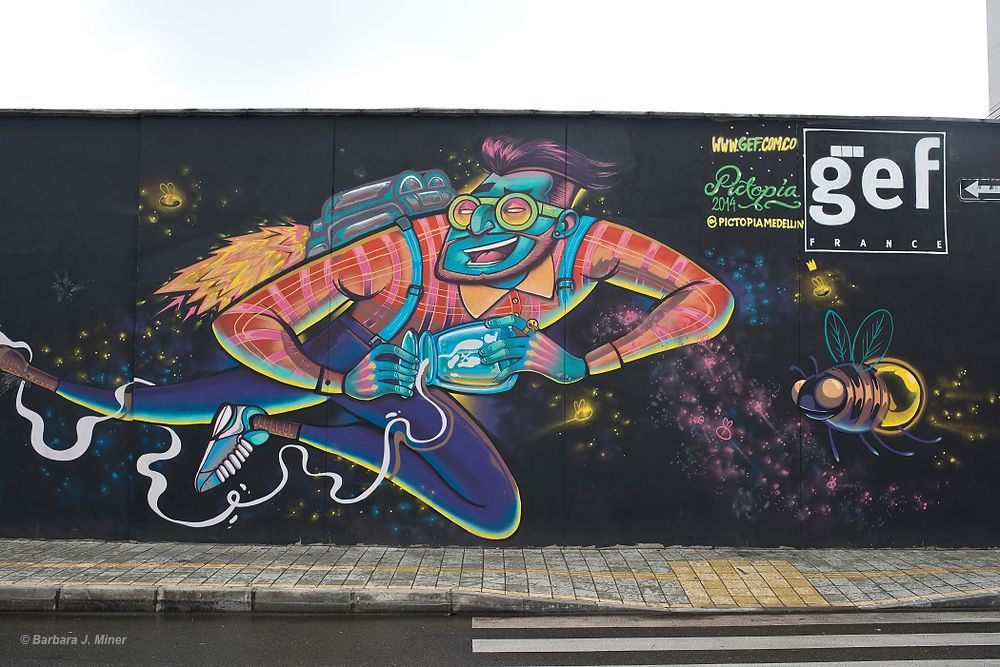
GENTRIFICATION/COMMODIFICATION: Street mural in the up-scale Poblado neighborhood in Medellín, 2015, promoting the GEF Colombian clothing brand.
-
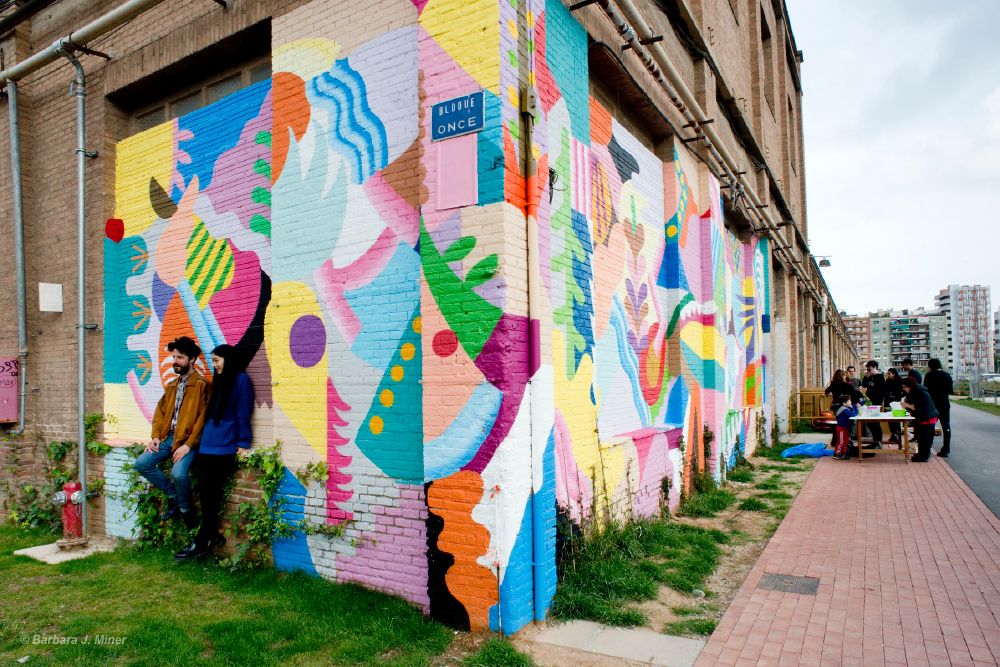
GENTRIFICATION/COMMODIFICATION: Mural at Can Battló, a former textile mill in Barcelona, Spain. The area is being promoted as a hip, "green," art-friendly neighobhood, but with community pushback against the gentrification.
-
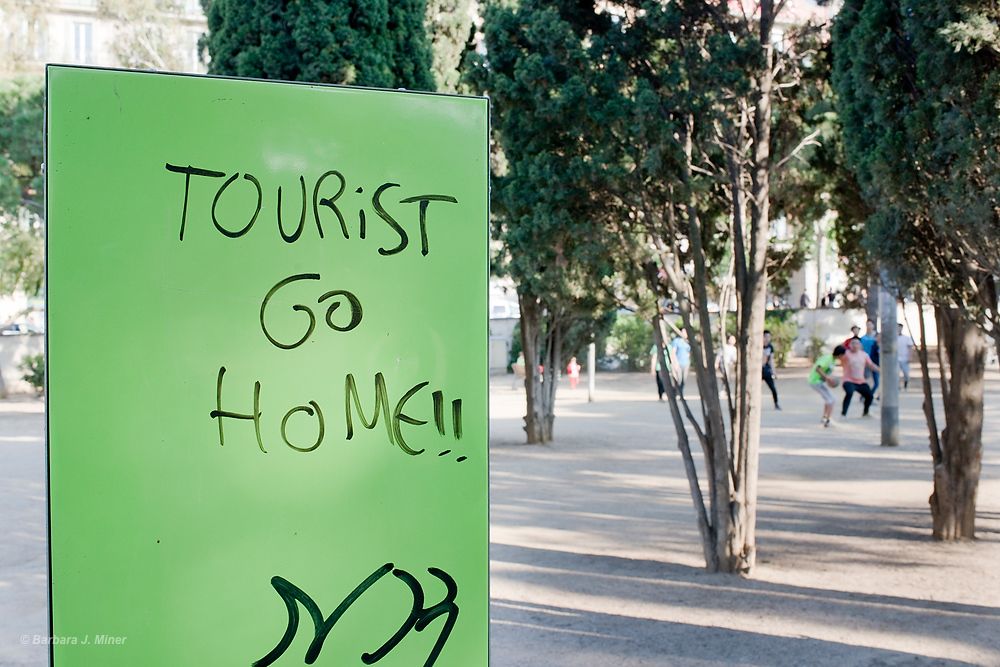
An increasingly common sentiment among residents in Barcelona, Spain who are being pushed out by gentrification and tourism.
